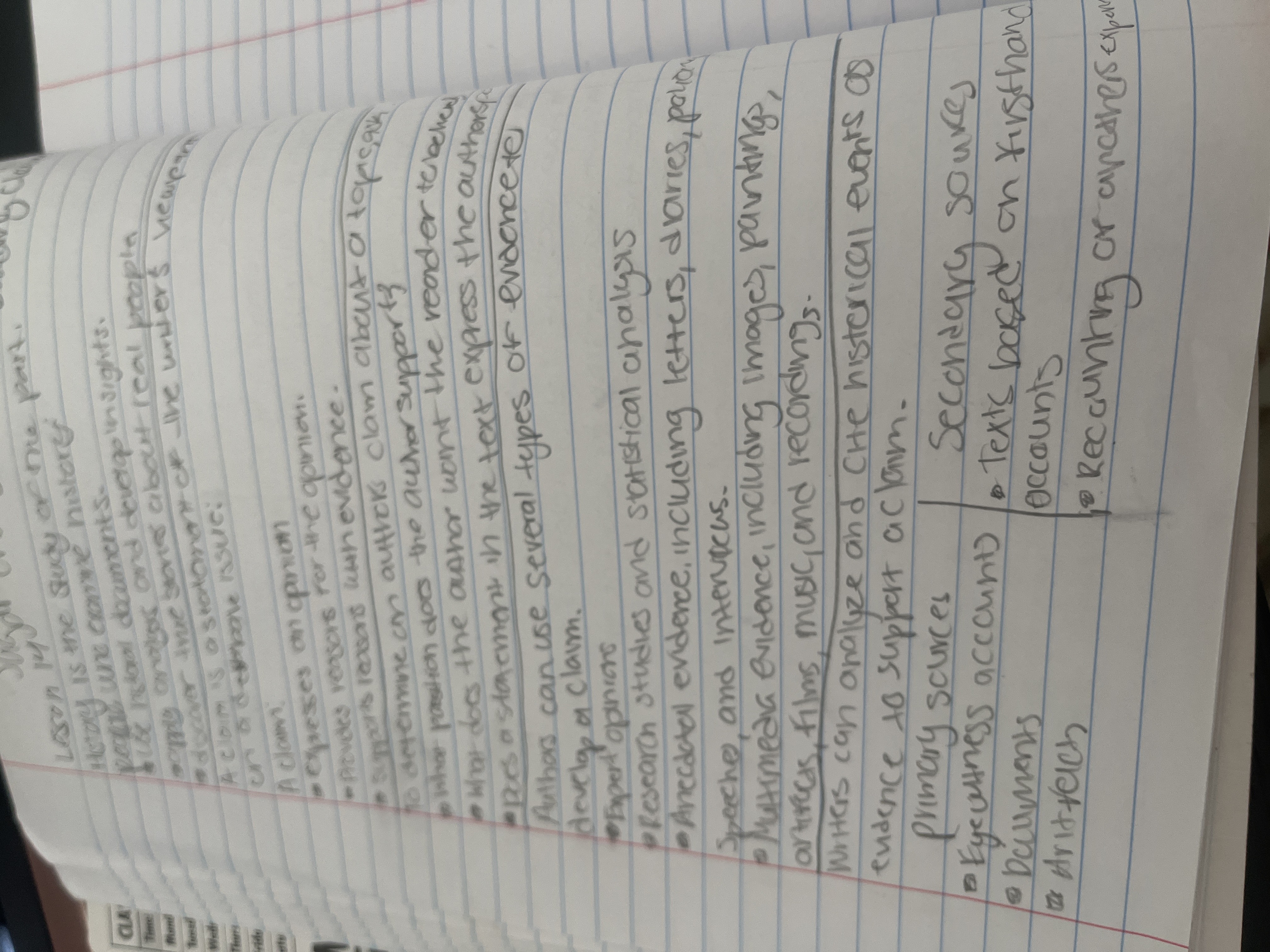What are the different types of evidence that authors can use to develop a claim in historical writing?

Understand the Problem
The question involves analyzing different types of evidence used in historical writing and claims. It outlines various methods for developing a claim and differentiates between primary and secondary sources.
Answer
Types of evidence include primary sources, secondary sources, expert opinions, research studies, statistical analysis, anecdotal evidence, and multimedia evidence.
Authors can use several types of evidence to develop a claim in historical writing. These include primary sources (eyewitness accounts, documents, artifacts), secondary sources (texts based on firsthand accounts, recounting of another’s experiences), expert opinions, research studies, statistical analysis, anecdotal evidence (letters, diaries, speeches, interviews), and multimedia evidence (images, paintings, artifacts, films, music, recordings).
Answer for screen readers
Authors can use several types of evidence to develop a claim in historical writing. These include primary sources (eyewitness accounts, documents, artifacts), secondary sources (texts based on firsthand accounts, recounting of another’s experiences), expert opinions, research studies, statistical analysis, anecdotal evidence (letters, diaries, speeches, interviews), and multimedia evidence (images, paintings, artifacts, films, music, recordings).
More Information
Different types of evidence provide various strengths to an author's argument, enhancing the depth and credibility of historical writing.
Tips
Common mistakes include relying too heavily on one type of evidence, failing to properly cite sources, and not critically evaluating the credibility of sources.
Sources
- Types of Evidence in Academic Arguments – English 102 - pressbooks.ulib.csuohio.edu
- Using Evidence: Writing Guides - wts.indiana.edu
- The Argument: Types of Evidence - Wheaton College, IL - wheaton.edu
AI-generated content may contain errors. Please verify critical information